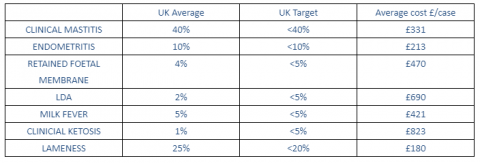Bryn Farm Project Introduction: Manipulating dry matter intake to reduce night time calvings and manage dry cow health and performance
Site: Bryn Farm
Address: Bryn Farm, Tremeirchion, St Asaph
Technical Officer: Rhys Davies
Project Title: Manipulating dry matter intake to reduce night time calvings and manage dry cow health and performance
Aim of the project
The project will aim to look at two aspects, firstly to investigate the importance of the dry cow’s blood mineral and metabolic status on her subsequent health, production and reproductive performance and secondly to reduce night time calving instances through the manipulation of her dry matter intake. The impact on calf colostrum quality will also be studied as the cow will be milked sooner in the calving pen post-partum and colostrum fed to the newborn calf quicker than if born at night.
Project introduction
In any successful block calving herd, the transitional and calving period is critical in ensuring optimum milk production and forage utilisation. In the majority of all year round calving herds, this area of herd management is often overlooked as the primary focus is on the milking herd, however, with more herds in Wales moving their calving pattern to either spring or autumn, it is vital that they are able to maintain pre and post-partum cow health and the subsequent block going forward.
Aled Potts from Bryn farm, Tremeirchion is one such young dairy farmer who manages a 90 cow all year round calving herd that is currently transitioning into an autumn block herd. He aims to calve his herd in a 12 week block from the end of July onwards. This change in system will allow for higher yields from both winter forage but also streamline the management of the herd as certain tasks such as calving, breeding and looking after youngstock will be focused and will allow for some time off in June and July.
Unlike many large block calving herds, Aled will be required to look after each task more or less himself and, during the intense period of calving, dealing with cases of metabolic disorders such as milk fever, displaced abomasum, ketosis can be time consuming as well as reducing the cow’s milk production and likelihood of getting back in-calf quickly.
Too many cows calving at night between 20:00 and 4:00 can be an additional problem as the farmer faces worry and stress during a time of day that they should be resting. The more cows that calve during the period around both milkings and in-between during the daytime will make it easier to quickly milk and feed the post-partum cow, also ensuring quality colostrum is fed to the calf as soon as possible. This focus site project will look at key nutritional changes that can be made to reduce problem cows during the dry period and also investigate the effectiveness of manipulating dry cow feeding times to reduce night time calvings.
The table below highlights some of the associated costs of metabolic disorders linked to the dry cow and fresh cow period. Some issues are due to feeding poorly conceived dry cow rations throughout the whole dry period, others are linked to management of the cow and dry cow housing in and around the time of calving. Ensuring the cow calves easily in a clean dry pen and allowing her access to feed and water quickly after calving will help mitigate some of the metabolic issues such as milk fever and LDA (left displaced abomasum). Cows that calve during day time will be subject to improved management and handling especially in one man operations rather than a night time calved cow who could be left until the following morning.
Table 1. Associated costs of common metabolic disorders and problems (Source: Macrae and Esselmount R 2015)

